If you're struggling with back pain, know that you are part of a massive global community. According to the World Health Organization (WHO), an estimated 619 million people worldwide live with low back pain. It is, by far, the most common issue addressed by manual therapies like physiotherapy and chiropractic care. (Curious about the advantages? Read our guide on Chiropractic benefits). But here’s the most important message we can share: pain does not always mean harm.
Keeping active is one of the most effective ways to manage your symptoms and get back to doing what you love. While painkillers can help you stay mobile, the right exercises are the key to long-term relief and prevention. This article will serve as your comprehensive guide to proven physiotherapy exercises designed to soothe your back and build a stronger, more resilient spine to soothe your back and build a stronger, more resilient spine. While focused on the back, many of these movements also help alleviate related issues like neck pain.
Why Are Exercises So Vital for Back Pain?
Think of these exercises like brushing your teeth; they are a daily routine essential for your long-term spinal health. Especially if you experience stiffness or radiating pain like sciatica, consistent movement is critical.
The benefits include:
- Strengthening the muscles that support your spine.
- Maintaining flexibility and reducing stiffness.
- Preventing future episodes as you age.
- Reducing stress and tension, which improves mood and sleep quality.
Consistent exercise is your best investment in a healthy, pain-free back for the decades to come.
Common Causes of Back Pain & How to Prevent It

Understanding the cause is the first step toward finding a solution. A physiotherapist can identify the root of your problem, which often involves one or more of the following:
- Aging: While natural changes occur, proactive care can keep your spine healthy regardless of age.
- Dehydration: Your muscles are highly active tissues that need plenty of water to function without getting tight.
- Inactivity: Prolonged periods of sitting, driving, or sleeping can cause significant muscle stiffness.
- Stress: Mental and emotional stress causes your body to tense up, putting direct pressure on your back muscles.
- Poor Lifting Technique: Always lift with your legs, not your back. Bend your knees, take a deep breath, and tighten your core muscles before lifting.
⚠️ Important: Before You Start Any Exercise
Your safety is the number one priority. This guide is for educational purposes and is not a substitute for professional medical advice.
- Always start gently and listen to your body. If an exercise causes sharp or increasing pain, stop immediately.
- Movement should be comfortable. Never force yourself through pain.
- Pace your activity. Start small, take breaks, and gradually increase your activity level over time.
- Consult a professional. Before starting any new exercise program, especially after an injury or for persistent pain, speak with a physiotherapist or your doctor.
Effective Physiotherapy Exercises for Back Pain
Here are 17 proven exercises to help relieve tension and strengthen your back. Perform them slowly and with control.
1. Knee to Chest Stretch
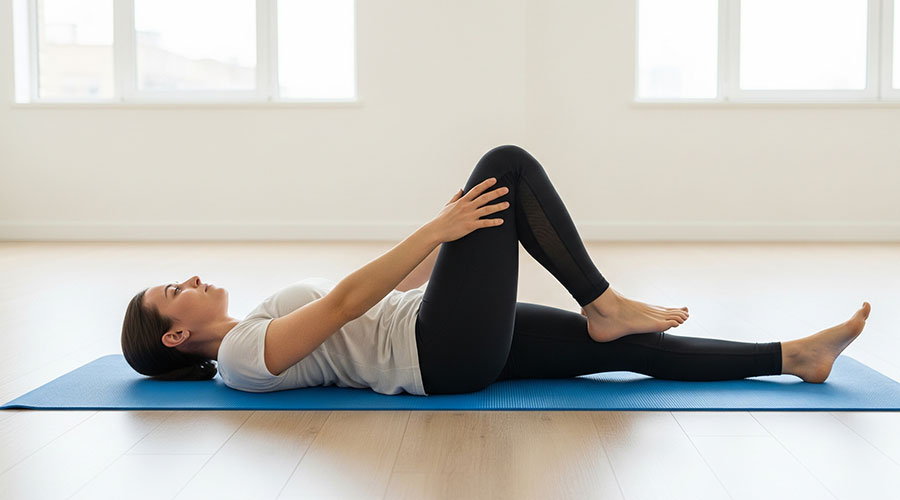
- Lie on your back with your knees bent.
- Gently pull one knee towards your chest until you feel a comfortable stretch.
- Hold for 20-30 seconds. Repeat 3 times on each side.
2. Lower Back Rotational Stretch
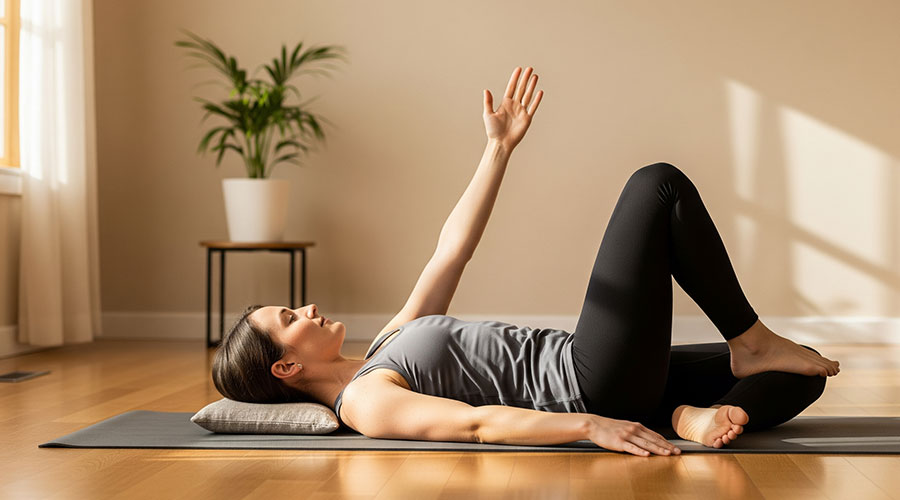
- Lie on your back with knees bent and feet flat on the floor.
- Keeping your shoulders on the floor, gently roll your bent knees from one side to the other.
- Repeat 10 times on each side.
3. Back Extensions (Half Push-up)
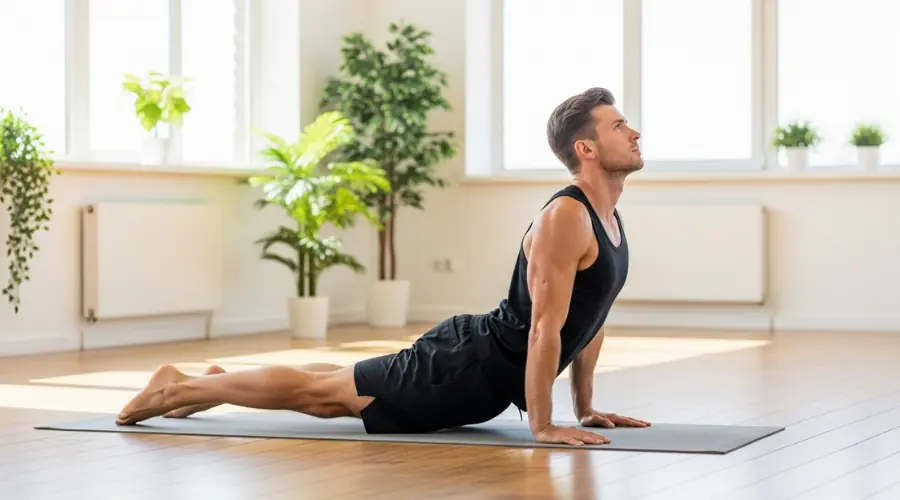
- Lie on your stomach and prop yourself up on your elbows.
- Gently arch your back by pushing through your hands. Keep your hips on the floor.
- Hold for 10-15 seconds. Repeat 5-8 times.
4. Figure-Four Rotational Stretch
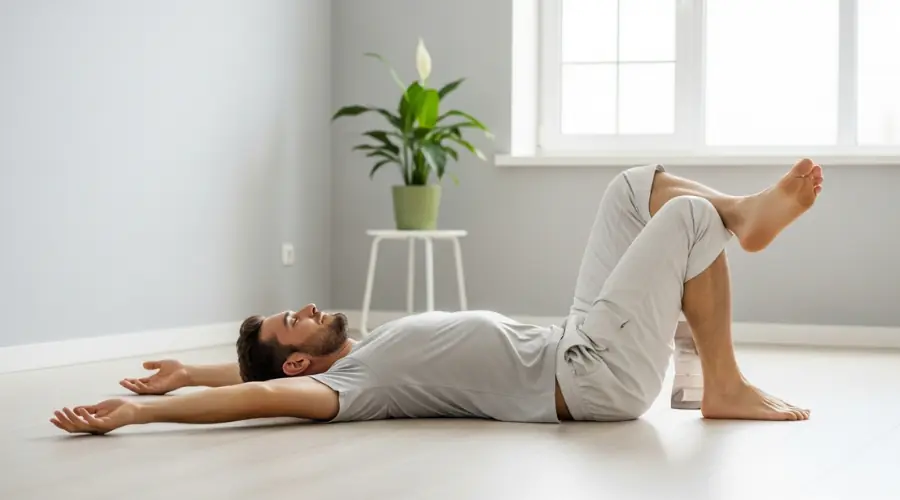
- Lie on your back, place one foot on the opposite knee.
- Gently pull the bottom knee towards you to stretch the buttock muscle (glute).
- Hold for 20-30 seconds. Repeat 3 times on each side.
5. Cat-Cow Stretch
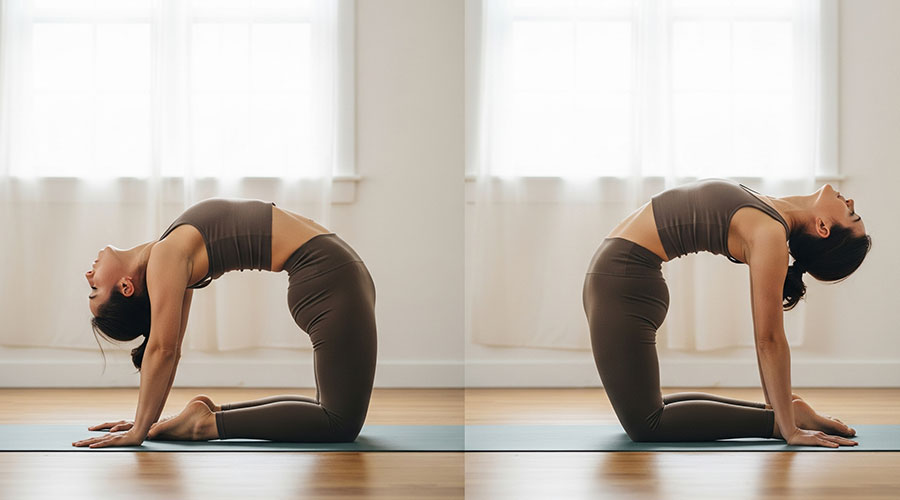
- Start on your hands and knees.
- Inhale as you gently arch your back, dropping your stomach towards the floor (Cow).
- Exhale as you round your spine upwards, tucking your chin to your chest (Cat).
- Repeat 10-15 times.
6. Child’s Pose

- From the hands and knees position, sit back so your bottom is resting on your heels.
- Reach your hands forward and lower your head.
- Hold for 30-60 seconds, breathing deeply.
7. Foam Rolling
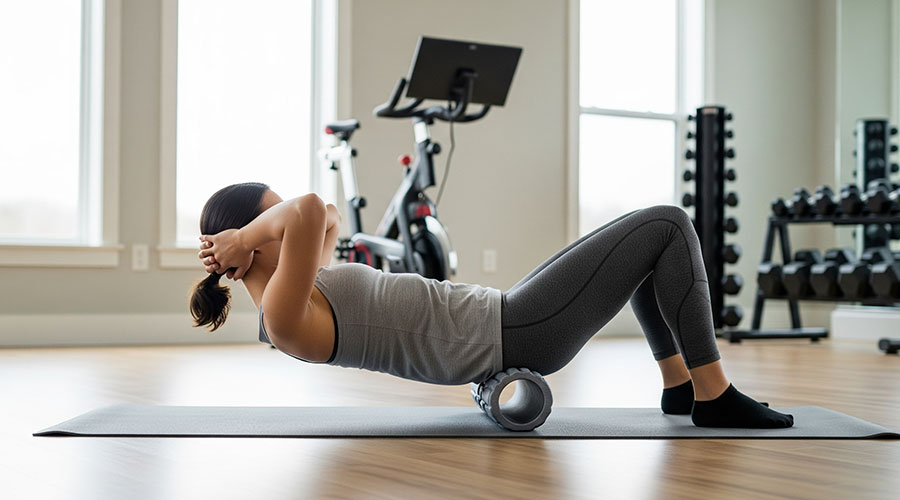
- Place a foam roller under your mid-back.
- Gently roll up and down to release muscle tightness. Avoid rolling directly on your lower back vertebrae.
8. Pelvic Tilts
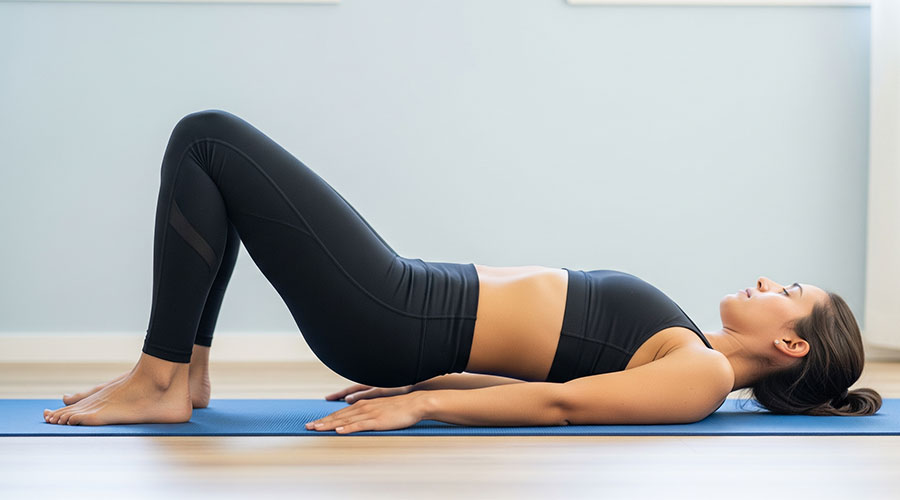
- Lie on your back with knees bent.
- Gently flatten your lower back into the floor by tightening your stomach muscles.
- Then, arch your back to create a small space.
- Repeat 15 times.
9. Spiky Ball for Glutes
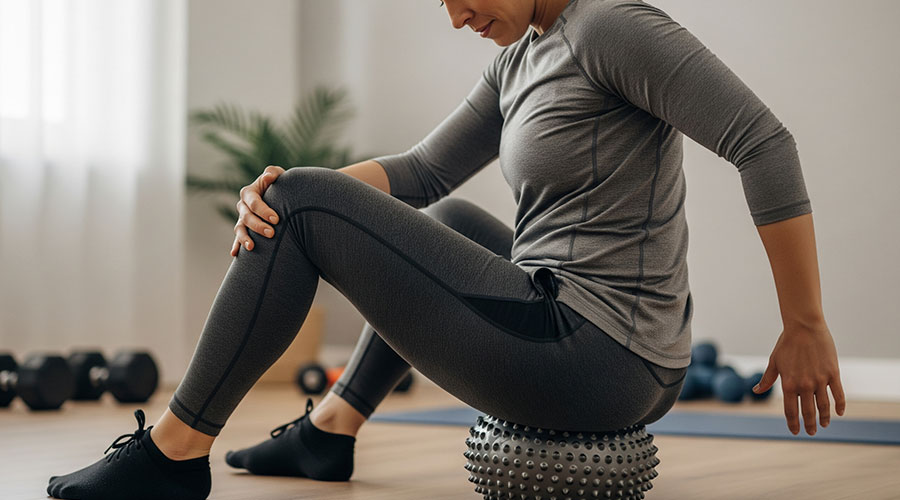
- Sit on a spiky massage ball, placing it under one of your glute muscles.
- Gently roll around to find and release tender spots.
10. Hip Flexor Stretch
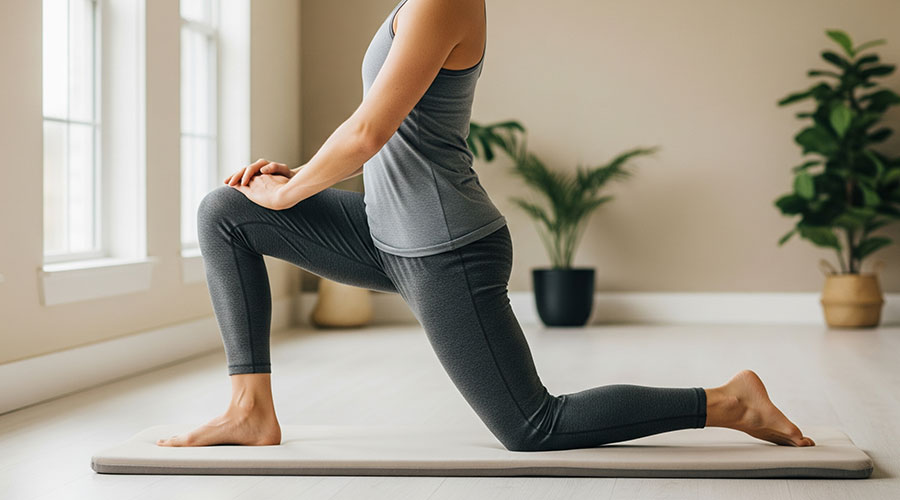
- Kneel in a lunge position with one knee on the floor.
- Gently push your hips forward until you feel a stretch in the front of your hip.
- Hold for 30 seconds. Repeat 3 times on each side.
11. Piriformis Stretch
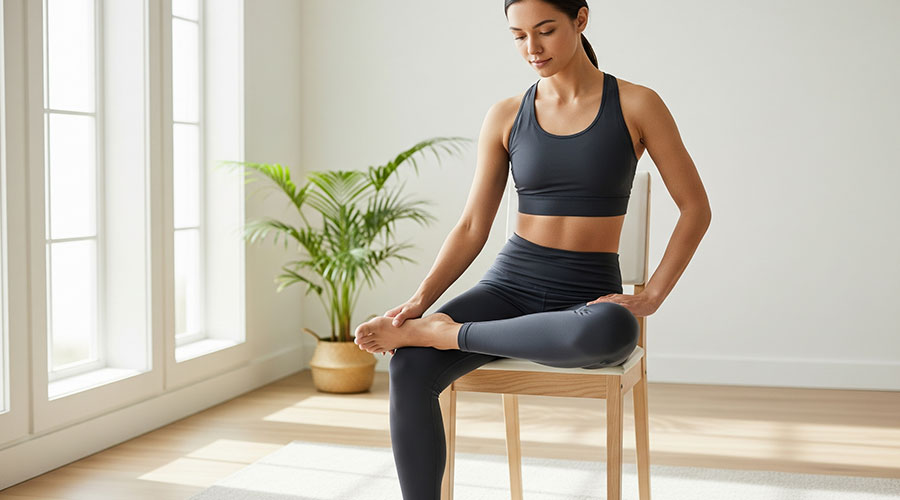
- Sit in a chair and cross one ankle over the opposite knee.
- Gently lean forward until you feel a stretch in your glute.
- Hold for 30 seconds. Repeat 3 times on each side.
12. Thread the Needle
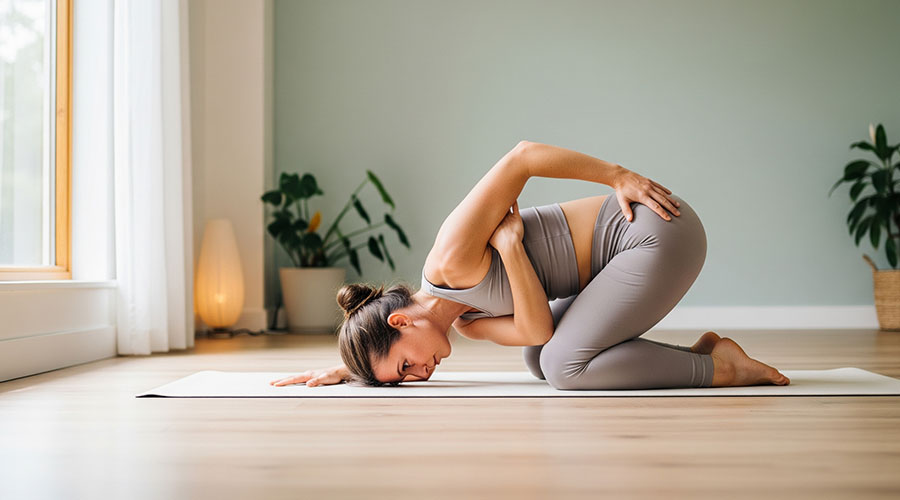
- Start on your hands and knees.
- Slide one arm underneath your body, resting your shoulder and head on the floor.
- Hold for 20-30 seconds. Repeat 3 times on each side.
13. Hamstring Stretch
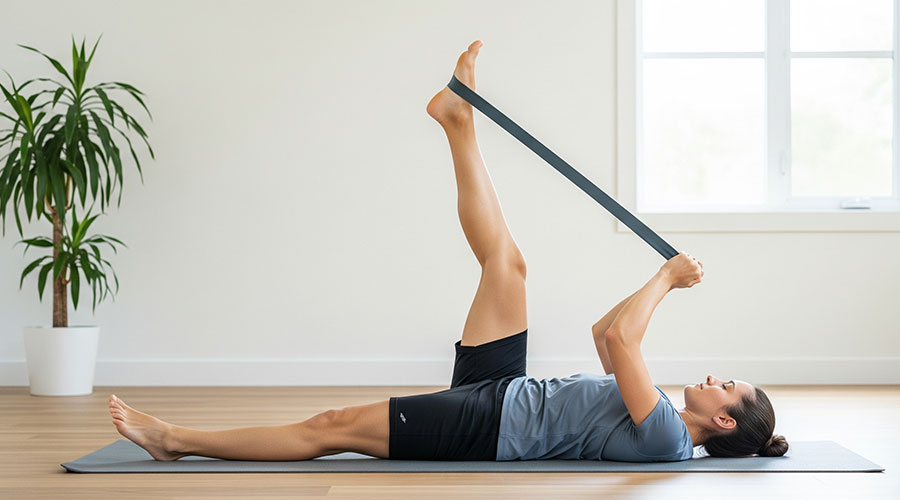
- Lie on your back. Loop a towel or stretch band around one foot.
- Gently pull the leg up until you feel a stretch in the back of your thigh. Keep the knee straight.
- Hold for 30 seconds. Repeat 3 times on each side.
14. Bridge Exercise

- Lie on your back with knees bent and feet flat on the floor.
- Squeeze your glutes and lift your hips off the floor until your body forms a straight line from your shoulders to your knees.
- Hold for 5 seconds. Repeat 15 times.
15. Seated Rotational Stretch

- Sit in a chair. Cross your right leg over your left.
- Gently twist your torso to the right, using the chair for support.
- Hold for 20 seconds. Repeat on the other side.
16. Shoulder Blade Squeeze

- Sit or stand tall.
- Gently squeeze your shoulder blades together as if you're trying to hold a pencil between them.
- Hold for 5 seconds. Repeat 15 times.
17. Squat
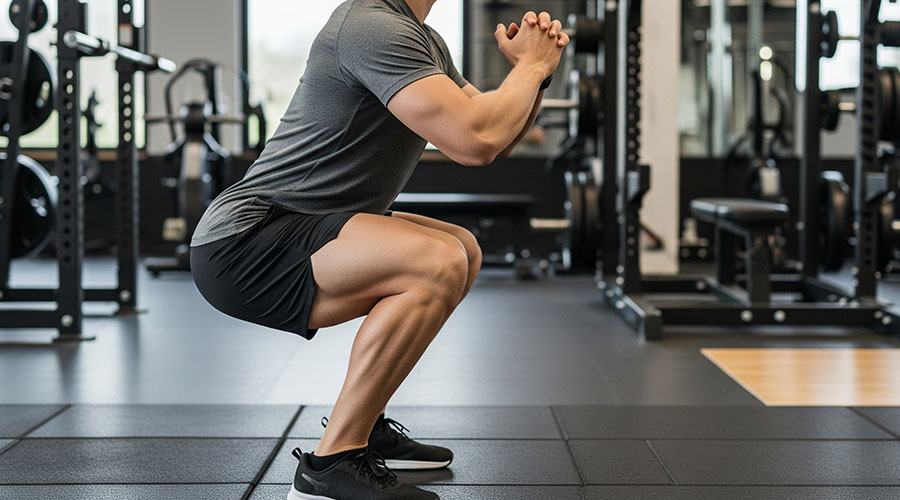
- Stand with your feet shoulder-width apart.
- Keeping your back straight and chest up, bend your knees and lower your hips as if sitting in a chair.
- Go as low as is comfortable. Repeat 10-15 times.
When Should You See a Physiotherapist?
Self-management is great, but professional guidance is sometimes necessary. See a physiotherapist if:
- Your pain doesn't improve after 2-4 weeks of gentle exercise.
- The pain gets worse during or after the exercises.
- You experience "red flag" symptoms: issues with your bladder or bowels, numbness or tingling in your legs or genital area, or feeling generally unwell.
A physiotherapist can provide a personalized treatment plan and hands-on therapies, which may include specialized techniques like dry needling or dry cupping, to accelerate your recovery. To make the most of your first appointment, it's helpful to know the right questions to ask your physical therapist.
Conclusion: Movement is Your Medicine
Your back is designed to move. By incorporating these gentle, effective exercises into your daily routine, you can actively manage your pain, prevent future flare-ups, and build a foundation for long-term spinal health. Remember to be patient with your body and always seek professional advice when you need it. Your back health is in your hands!



